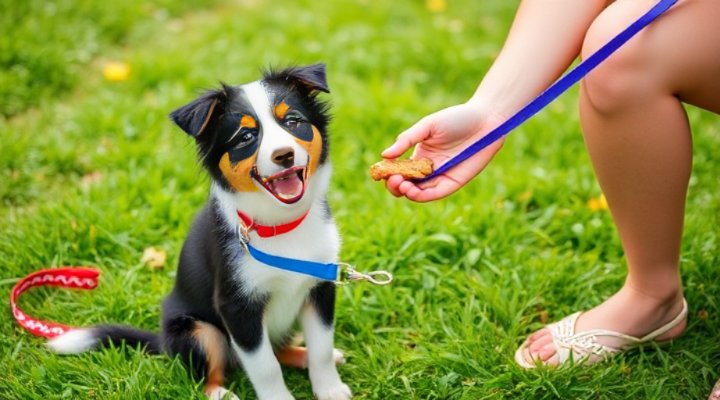Leash training a puppy is one of the most important skills you can teach your furry friend. Not only does it make walks more enjoyable, but it also ensures their safety and good behavior in public spaces. In this guide, we’ll walk you through the process step by step, making it easy for both you and your puppy.

Why Leash Training a Puppy is Important
First and foremost, leash training a puppy helps prevent pulling, which can be frustrating and even dangerous. Moreover, it teaches your puppy to focus on you during walks, reducing distractions and potential hazards. For instance, a well-trained puppy is less likely to dart into traffic or chase after other animals.
Additionally, leash training strengthens the bond between you and your puppy. It’s a great way to build trust and communication. If you’re also working on potty training, combining these lessons can be highly effective.

Choosing the Right Leash and Collar
Before you start leash training a puppy, it’s essential to choose the right equipment. A lightweight, adjustable leash and a comfortable collar or harness are key. For example, a harness can be a better option for small breeds or puppies prone to pulling.
Furthermore, avoid retractable leashes during the initial training phase. They can confuse your puppy and make it harder to teach consistent walking behavior. If you’re unsure, consider consulting a professional at affordable dog training near me for personalized advice.

Step-by-Step Leash Training Process
Step 1: Introduce the Leash Indoors
Start by letting your puppy wear the leash indoors for short periods. This helps them get used to the sensation without the added distraction of outdoor stimuli. Reward them with treats and praise to create positive associations.
Step 2: Practice in a Quiet Area
Once your puppy is comfortable, move to a quiet outdoor area. Begin with short sessions, gradually increasing the duration as your puppy improves. Remember, patience is key!
Step 3: Use Positive Reinforcement
Always reward good behavior with treats and verbal praise. If your puppy pulls, stop walking and wait for them to calm down before continuing. Consistency is crucial for successful leash training.

Common Challenges and Solutions
Leash training a puppy isn’t always smooth sailing. Some puppies may resist or become distracted easily. For example, if your puppy is particularly stubborn, you might find our guide on training a stubborn husky helpful.
Another common issue is fear or anxiety. If your puppy seems scared of the leash, take things slower and use extra treats to build confidence. For more tips on handling anxious pets, check out our article on reducing pet anxiety.
Final Thoughts
Leash training a puppy requires time, patience, and consistency, but the rewards are well worth it. A well-trained puppy makes walks enjoyable and strengthens your bond. For more training tips, explore our puppy training basics guide.
Related Keywords: puppy leash training, how to leash train a puppy, leash training tips, puppy walking, dog training
